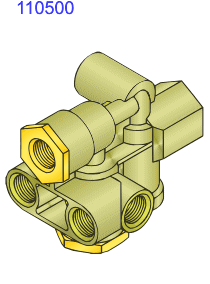| Spring brake valves are designed for three primary functions: |
| 1. To fill the reservoirs 2. To release the spring brake side of the brake chamber. 3. Engage the spring brakes for parking and during emergency situations such as breakaway. A more detailed description can be found in the Tech section About subsection. |
| Notes: |
| This is a simplified description and does not take into
account service brake operations, specific model features, or additional built
in protections. The spring side of a brake chamber will release the brakes when ample air pressure is supplied. This is opposite of the service side of the chamber. |
 |